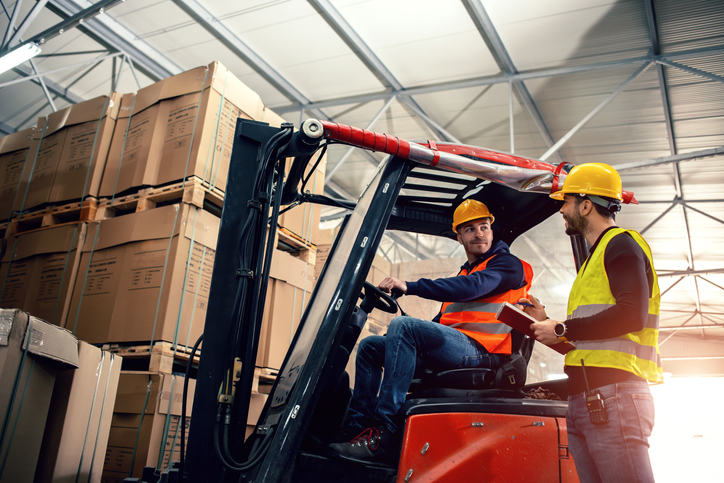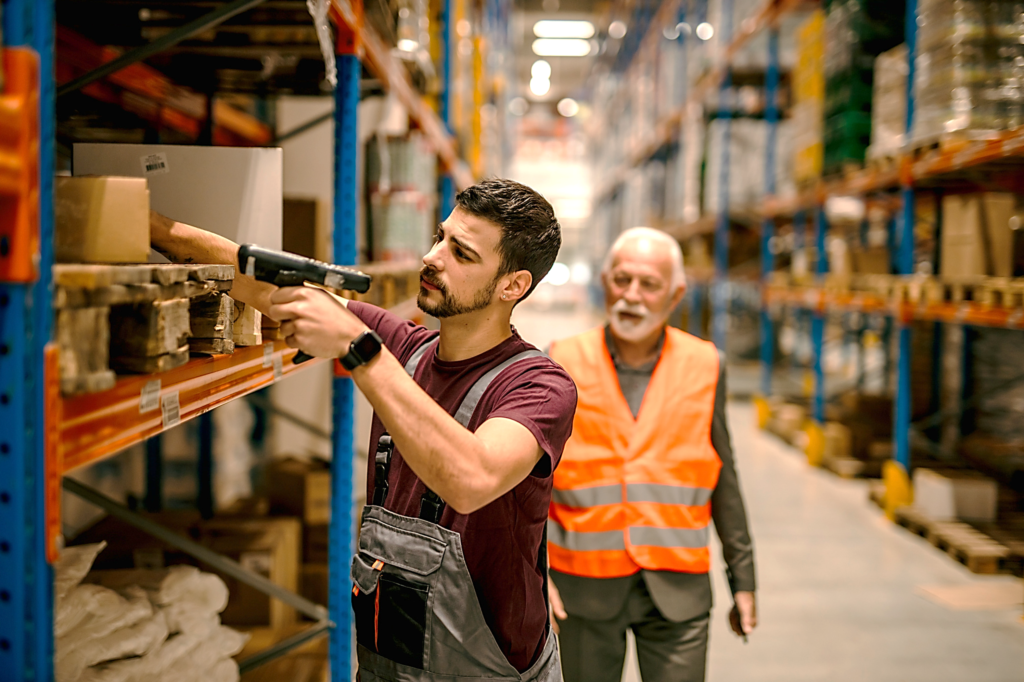As stricter safety requirements are being implemented continuously, the importance of complying with operational safety in warehouses is becoming progressively more crucial.
Real Time Location Systems, or RTLS, are perfectly suited for today’s operational environment. An RTLS monitors the status and location information of assets and employees in real time and provides up-to-date business intelligence to inform everything from work schedules to route planning and crisis decision-making. Let’s look at some safety applications of RTLS in the warehousing environment.
1. Collision Awareness and Avoidance
Awareness
Near collisions occur daily in dangerous warehouse environments. Whether it’s between a vehicle and a person or several vehicles, investing in a CAS (collision awareness system) can assist in protecting on-site personnel, heavy equipment operators, valuable equipment, and contractors.
When personnel and equipment are all tagged with a CAS, they can alert each other, either via a light flashing display, an audio message, vibrations, etc. This results in the possibility of action being taken before a collision happens.
The most important benefit of collision avoidance is improving overall safety for humans, be they employees or contractors, by avoiding injuries and death. A warehouse can also avoid costs that come from investigation shutdowns, extra downtime, as well as equipment loss and damage.
Avoidance
The use cases for collision avoidance systems are similar to those for collision awareness, in that they aim to prevent accidents. The main difference is that collision awareness systems warn people of proximity and the people then have to take action themselves to prevent an accident, whereas collision avoidance systems work by automatically preventing vehicles from moving when they get too close without needing driver interaction. This may be required in scenarios where workers become incapable of operating a vehicle, are distracted, or fall asleep. This means that when people and equipment are tagged and a vehicle gets too close, it will be forced to stop and thus prevent an accident.
2. Autonomous Processes
Autonomous processes in warehouse environments, where automated equipment or vehicles replace manual processes, need reliable positioning for the best accuracy possible. When you leverage RTLS location data for automation, it results in fewer workers being required for high-risk operations, and this in turn leads to more accidents being prevented.
3. Location Tracking
Safety Exclusion Zones
Safety exclusion zones may be used in hazardous areas to prevent individuals from entering them. Using geofencing, virtual perimeters are created which will trigger appropriate actions and alerts when a tagged object or individual approaches it, ensuring that they don’t enter these zone. The zones can track the proximity of worker/heavy machinery, vehicle/vehicle, or vehicle/worker and either automatically stop a vehicle or send a warning, depending on the CAS that is being used.
The zones can be as big as required and managers or supervisors can receive real-time alerts that will show exactly what is in the zone on a digitized map, what has entered the area, and how long it has been there. These areas can also be used to trace theft of valuable assets by tracking what has entered and left the area.
Safety Incident Investigations
When an accident has occurred, it is always beneficial to have location data that will help in finding the cause of the accident and prevent it from happening in the future. When employees and assets are tracked with an RTLS, this enables replays for forensic purposes to track the events that occurred and when they did. If this information is not available, an investigation will typically take a lot longer to conduct, and this leads to increased costs due to production being shut down for a longer period.
The general benefits of using RTLS for investigating safety incidents include having access to time-stamped events from integrated systems which will help in minimizing investigation time, the ability to perform a Root Cause Analysis, and being able to perform an operational review that will allow the warehouse to change operations to improve safety and productivity.
Operational Tracking
Tracking personnel in dangerous or industrial environments is crucial to keep each individual safe while staying accountable for all contractors and workers. In situations where people are put in danger, there is a high requirement for an RTLS to track employees. The reliability of RTLS will help organizations stay secure, by enabling assets and personnel to be tagged and tracked even in harsh industrial environments such as warehouses, mines, factories, and process plants. The location data can then be used to determine exactly where everything is on a digitized map of the facility.
The benefits of having operational tracking in different types of facilities are visibility over operations, meeting regulations like rules, for example, those contained under the Mine Safety and Health Administration (MSHA), and being able to obtain data on how to change processes to make them more efficient.





